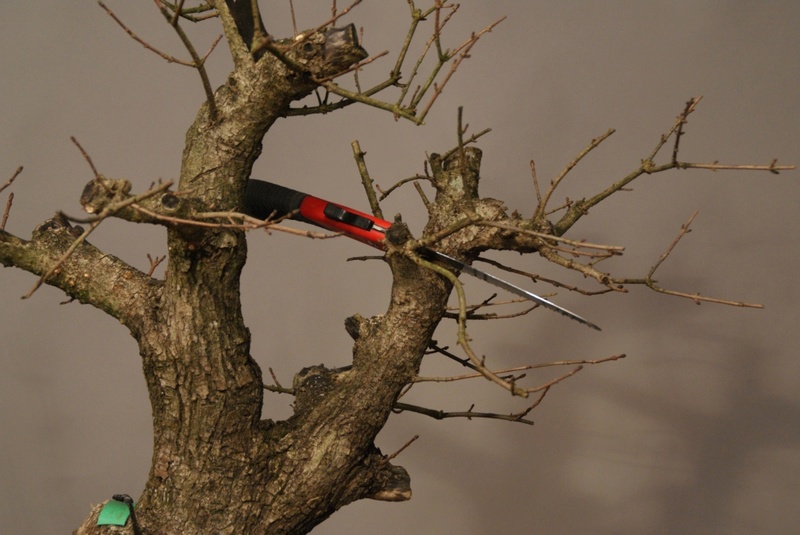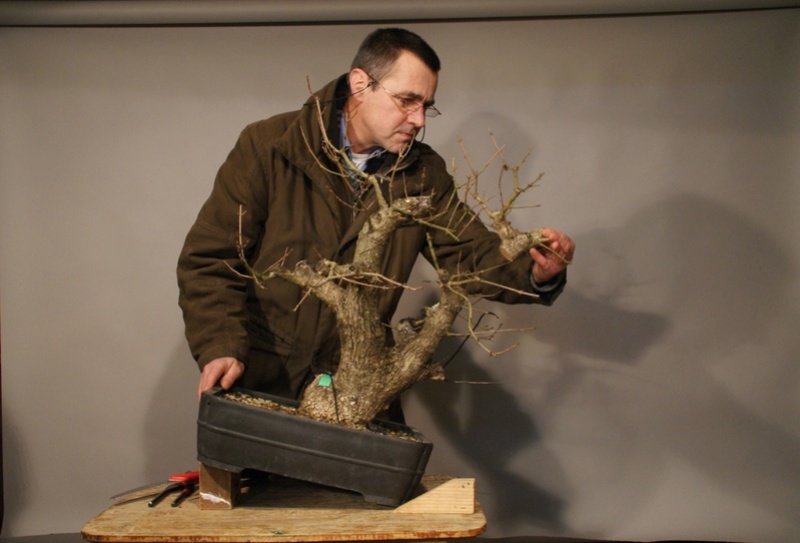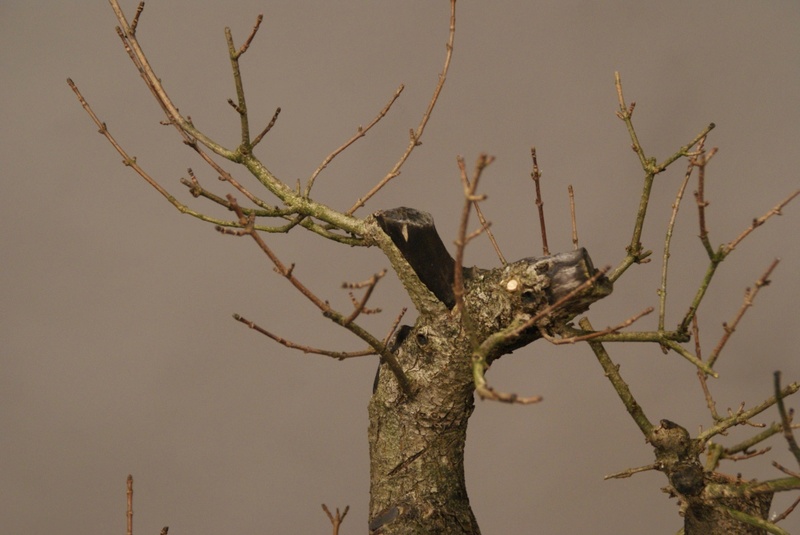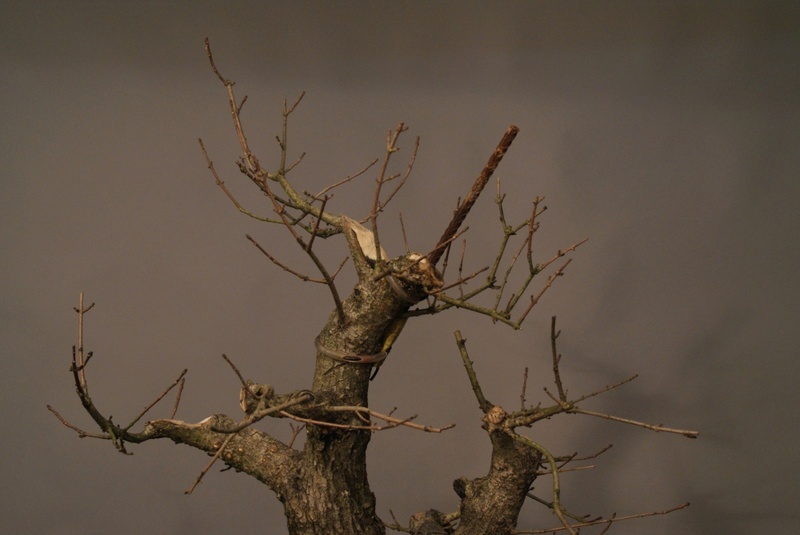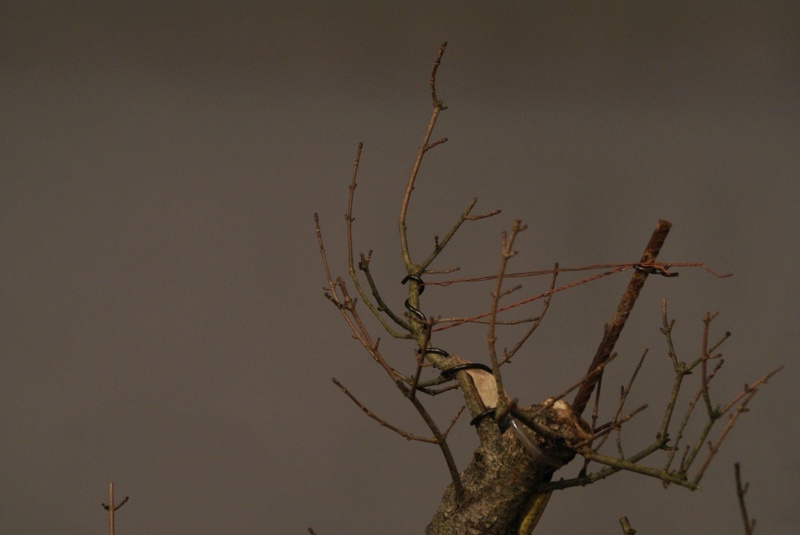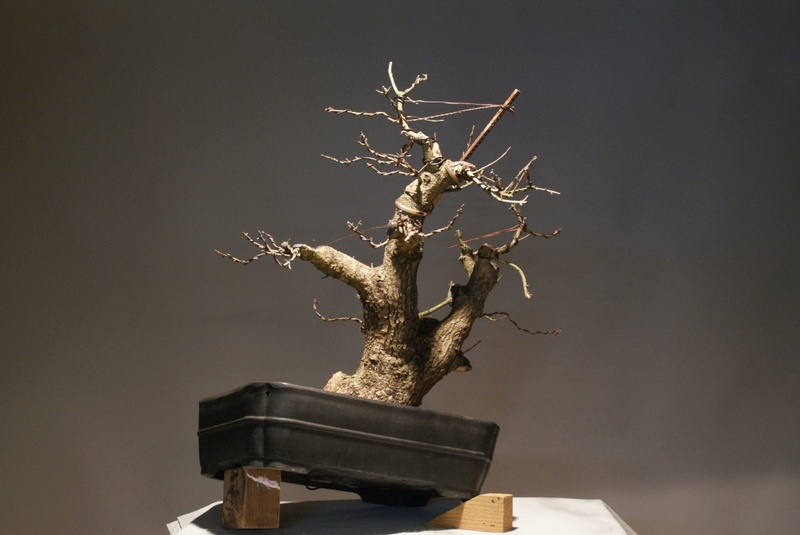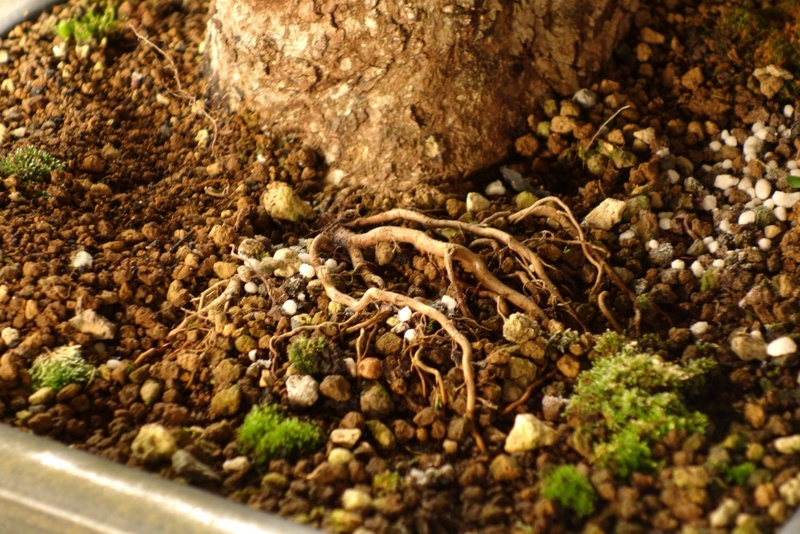Old Acer campestre - Field Maple. Airlayering and forming
3 posters
Page 1 of 1
 Old Acer campestre - Field Maple. Airlayering and forming
Old Acer campestre - Field Maple. Airlayering and forming
Hi
2011 i bought a old Field maple.
I knew that it will be a lot of work to make from this wild tree a Bonsai. So i warn you. It will be a long thread.
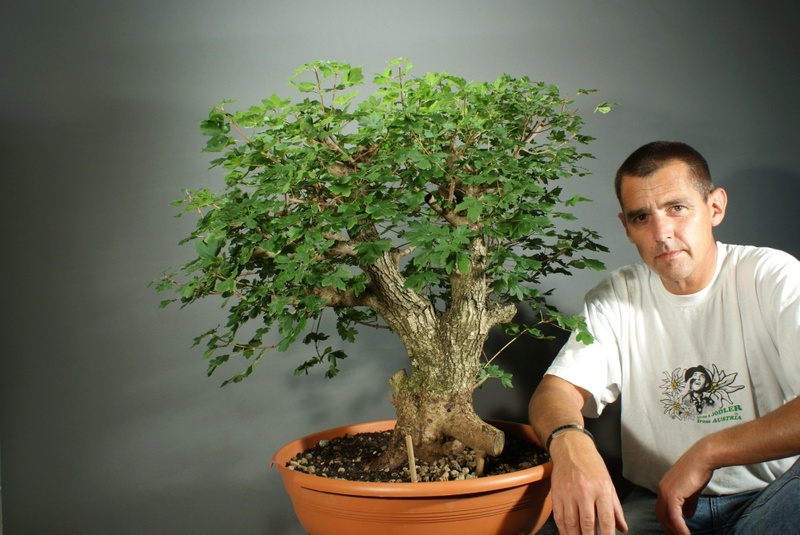
After buying a tree a make a virtual. This is the Vision of the tree in a few years.
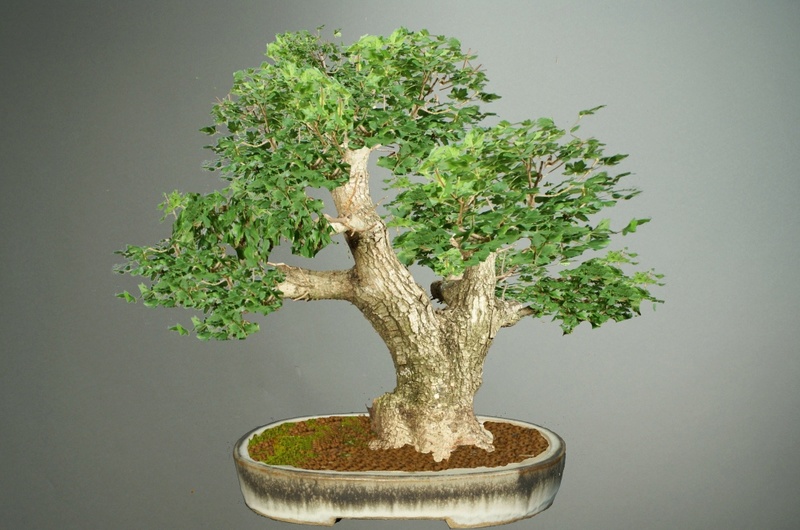
The greatest Problem of this tree was that the trunk gets thinner and that there was no good nebari.
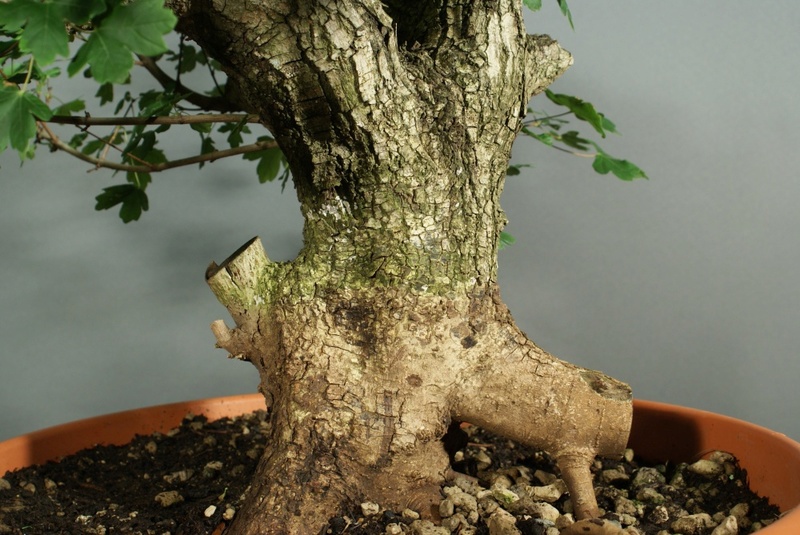
The branches where too thick and a lot of them is not to use.
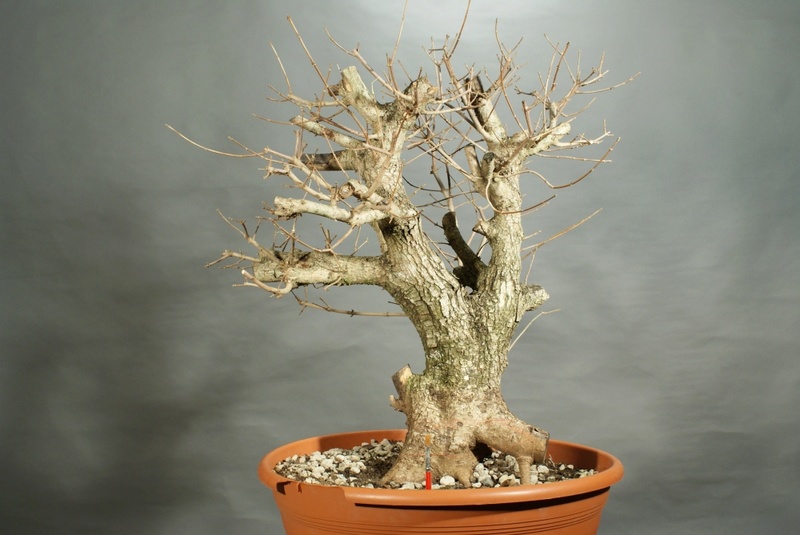
After growing one Season i startet to work with the tree.
First i removed or shorten the branches.
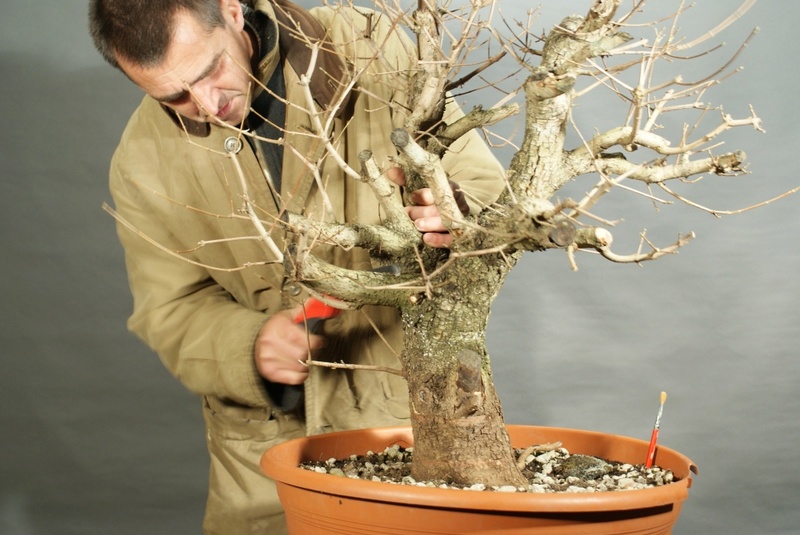
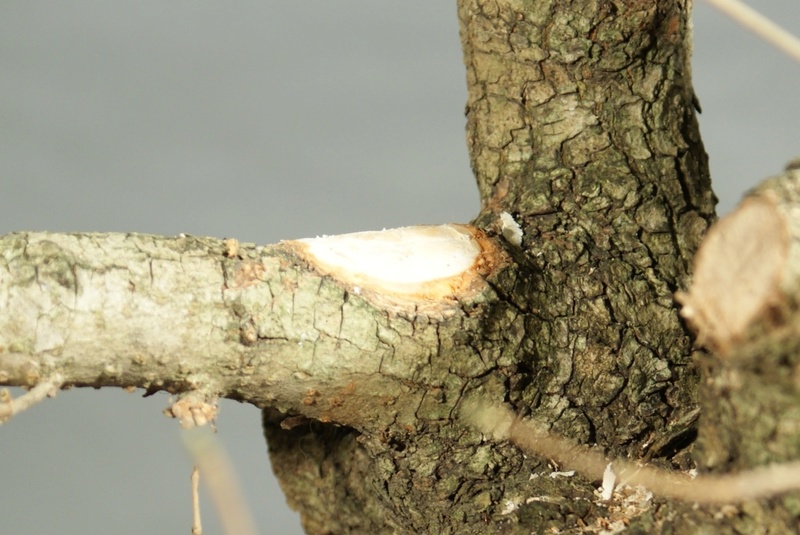
In spring 2012 i started airlayering the tree. I informed me in the Internet but i did not find many results of airlayering a old field maple.
We will see.
First i marked the line.
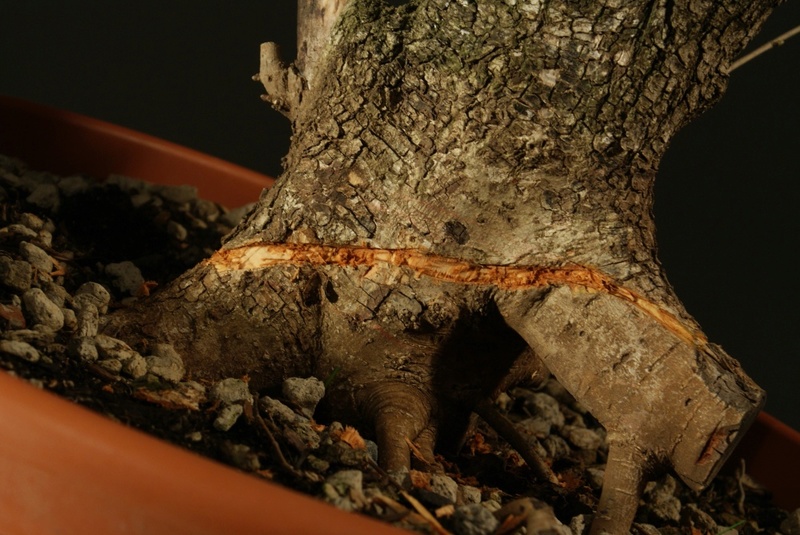
And the i removed the bark. A knew that a Field maple makes al lot of callus, so i remove a wider ring of bark as usual.

After that i put on Sphagnummoss and closed with plastic.
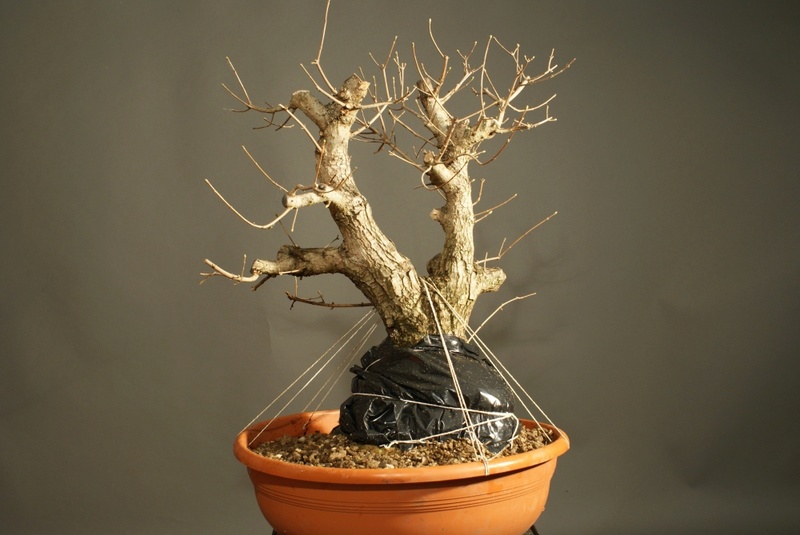
2011 i bought a old Field maple.
I knew that it will be a lot of work to make from this wild tree a Bonsai. So i warn you. It will be a long thread.

After buying a tree a make a virtual. This is the Vision of the tree in a few years.

The greatest Problem of this tree was that the trunk gets thinner and that there was no good nebari.

The branches where too thick and a lot of them is not to use.

After growing one Season i startet to work with the tree.
First i removed or shorten the branches.


In spring 2012 i started airlayering the tree. I informed me in the Internet but i did not find many results of airlayering a old field maple.
We will see.
First i marked the line.

And the i removed the bark. A knew that a Field maple makes al lot of callus, so i remove a wider ring of bark as usual.

After that i put on Sphagnummoss and closed with plastic.

Last edited by Herbert A on Sun May 21, 2017 10:41 pm; edited 1 time in total

Herbert A- Member
JanG. likes this post
 Re: Old Acer campestre - Field Maple. Airlayering and forming
Re: Old Acer campestre - Field Maple. Airlayering and forming
7 Month later in October 2012 i looked it the tree has made now roots.
There were no roots. Nothing! Just a lot of callus.

There were two possibilities. If ailayering a tree it is very important that it is warm under the plastic. So the Sphagnummoss was in contact with the soil and it could be that it was to wet and to cold. Oterwise the tree Needs more time to make new roots.
But we will see. Now i made a new tecnique. I put plastic film on the Substrate that there was no contact with the soil and i took just pumice and akadama instead of Shagnummoss.

In March 2014 i looked again. Now it seems to be successful.

Wouw - what a lot of roots. I was very glad that i put plastic film on the ground. So the new roots could not grow into the soil of the rootball.
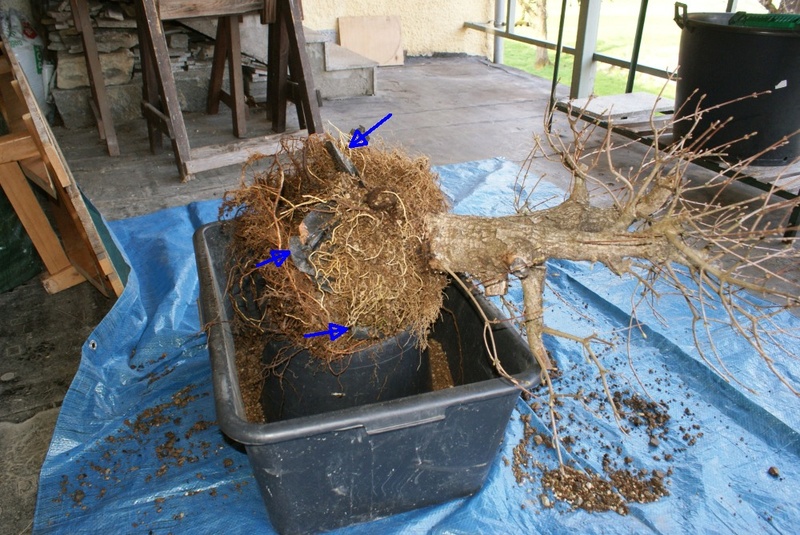
Cut the thik old roots with a saw.
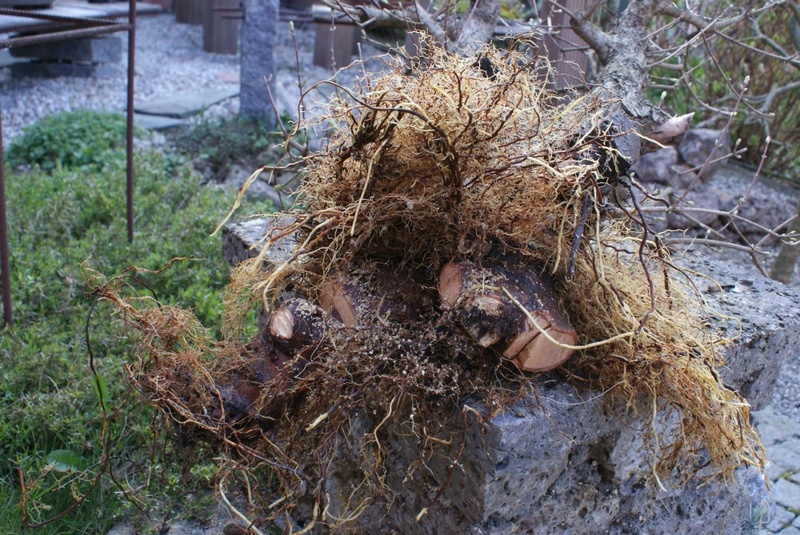
It was not possible to cut as near as i wanted to cut becaus i would damage a lot of the new roots. So it was better to remove the Wood with a machine.
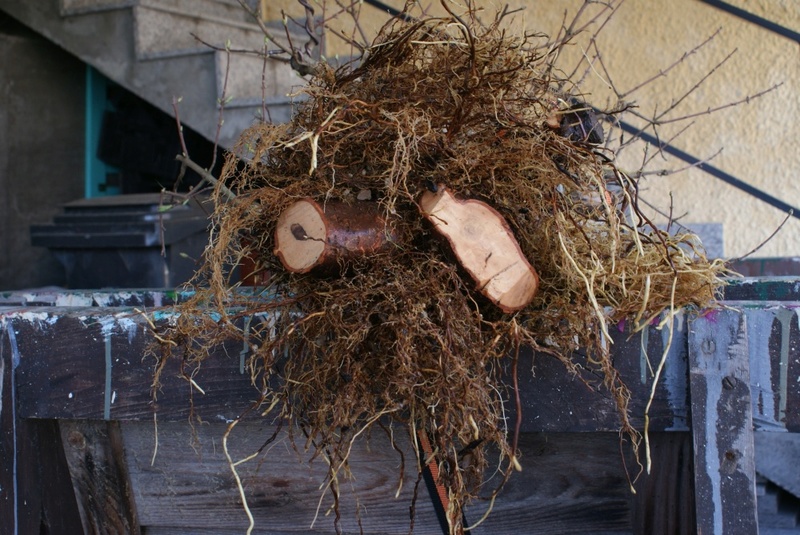
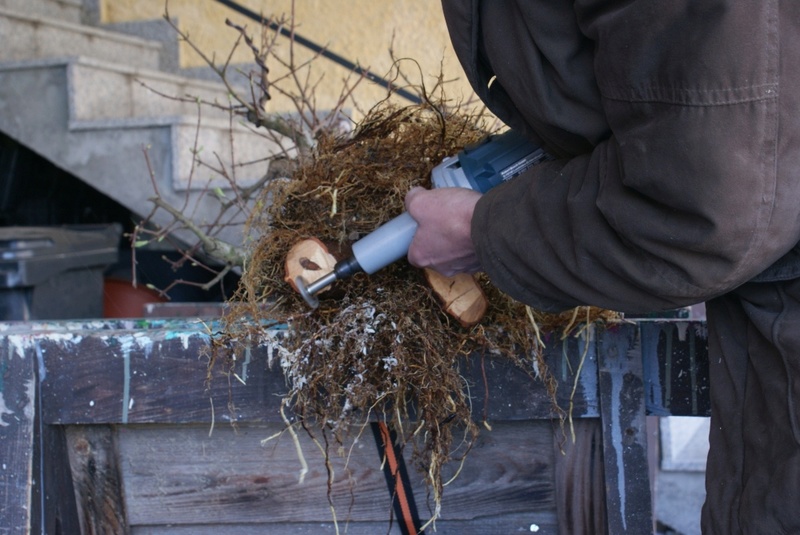
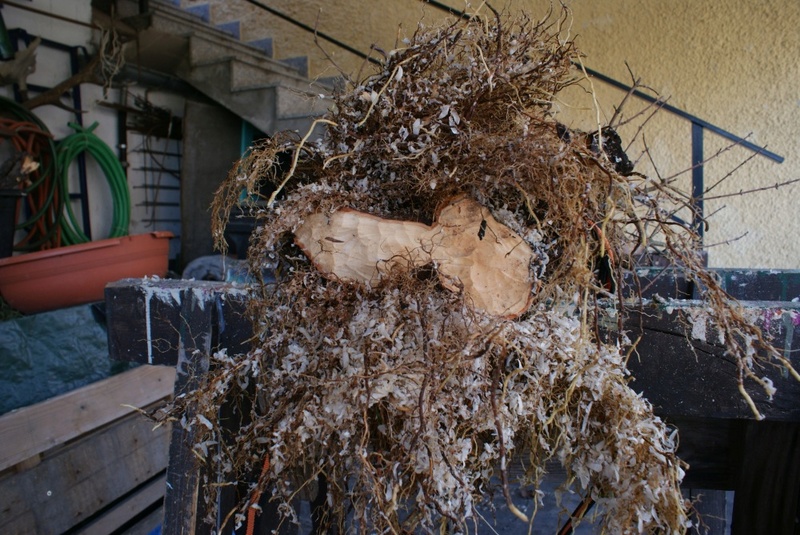
Now after two years airlayering the tree is ready for a trainingspot.
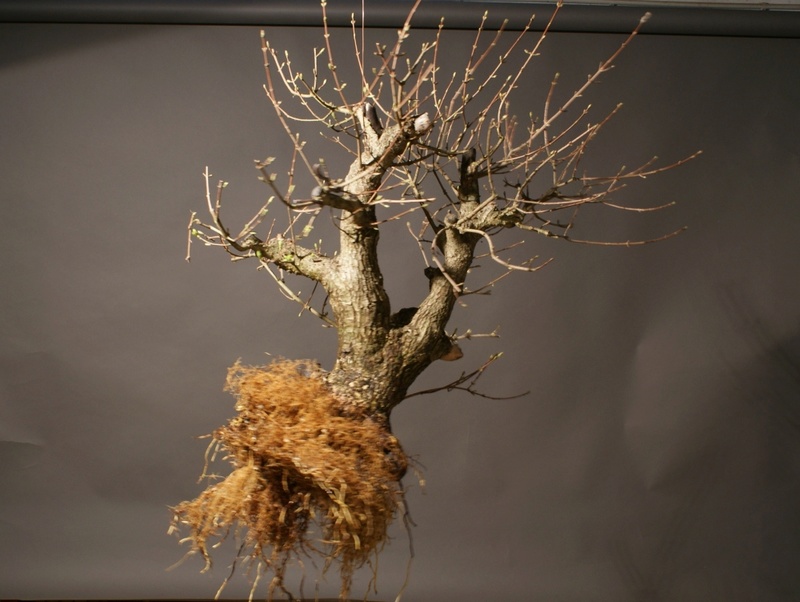
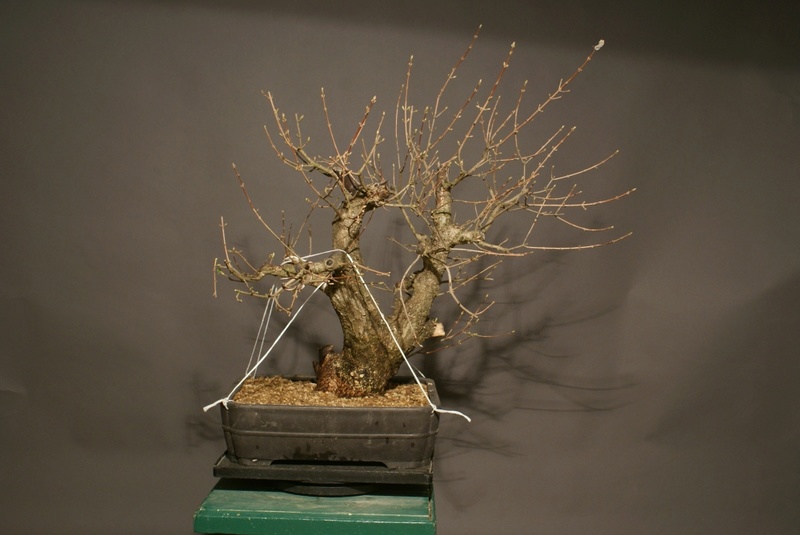
There were no roots. Nothing! Just a lot of callus.

There were two possibilities. If ailayering a tree it is very important that it is warm under the plastic. So the Sphagnummoss was in contact with the soil and it could be that it was to wet and to cold. Oterwise the tree Needs more time to make new roots.
But we will see. Now i made a new tecnique. I put plastic film on the Substrate that there was no contact with the soil and i took just pumice and akadama instead of Shagnummoss.

In March 2014 i looked again. Now it seems to be successful.

Wouw - what a lot of roots. I was very glad that i put plastic film on the ground. So the new roots could not grow into the soil of the rootball.

Cut the thik old roots with a saw.

It was not possible to cut as near as i wanted to cut becaus i would damage a lot of the new roots. So it was better to remove the Wood with a machine.



Now after two years airlayering the tree is ready for a trainingspot.



Herbert A- Member
JanG. likes this post
 Re: Old Acer campestre - Field Maple. Airlayering and forming
Re: Old Acer campestre - Field Maple. Airlayering and forming
Modification of deadwood afer removing a branch. If there would be great wounds i do not cut the branch directly on the stem but leave a piece.
I think it is more beautiful.

I like the autumn coloring.
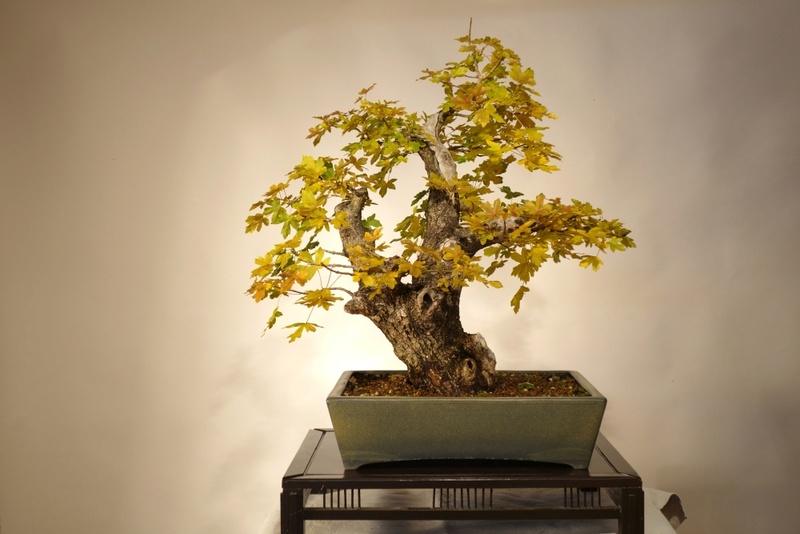
In April 2016 it was time to select the roots. We don´t Need all the roots for al good nebari. Just the roots we want to see are important.
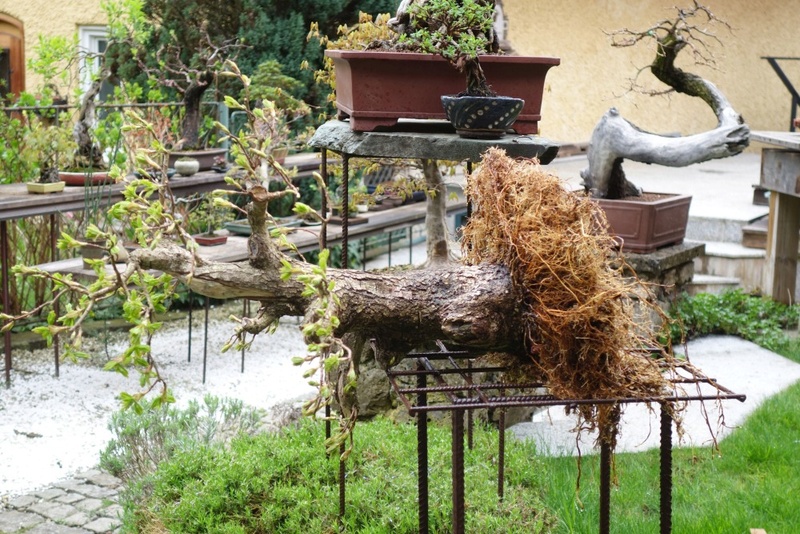
Wash out all the soil.

And cut all roots we do not need for a good Nebari. So the existing roots will thicken.
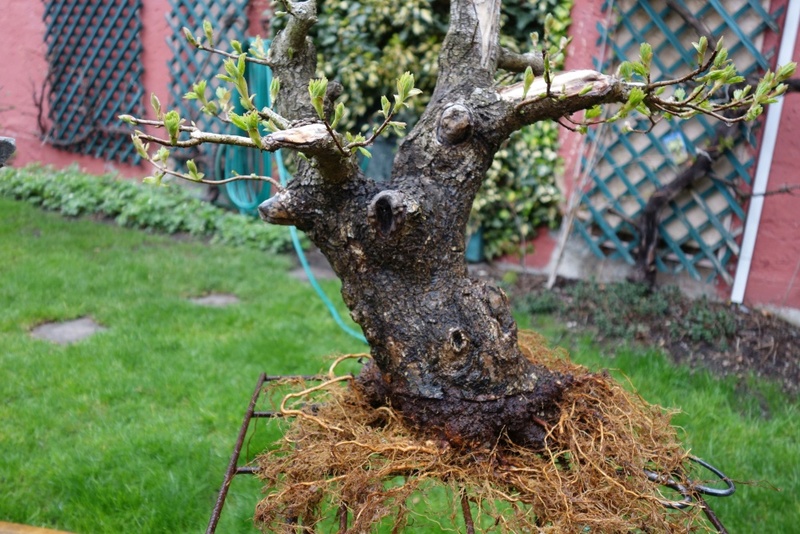
Now he can be planted in an better pot.
Five years after starting to make a Bonsai.
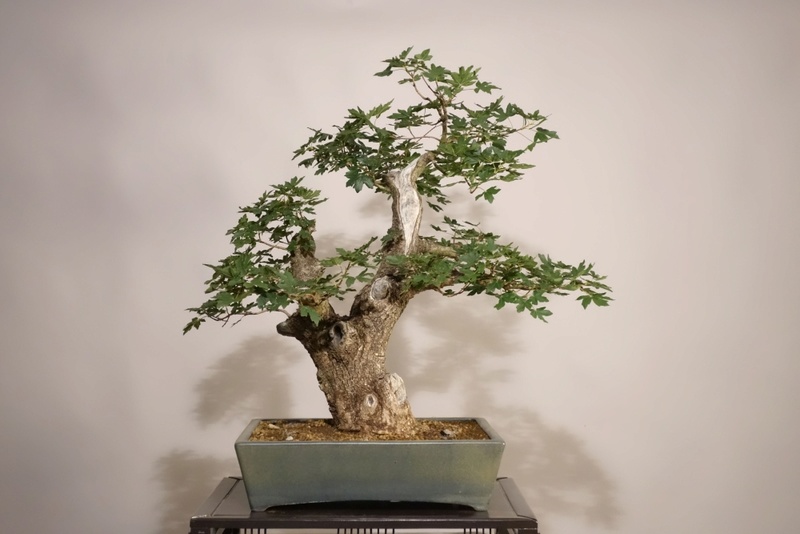
The next days i will make a picture how he Looks actually.
ciao
Herbert
I think it is more beautiful.

I like the autumn coloring.

In April 2016 it was time to select the roots. We don´t Need all the roots for al good nebari. Just the roots we want to see are important.

Wash out all the soil.

And cut all roots we do not need for a good Nebari. So the existing roots will thicken.

Now he can be planted in an better pot.
Five years after starting to make a Bonsai.

The next days i will make a picture how he Looks actually.
ciao
Herbert

Herbert A- Member
JanG. likes this post
 Re: Old Acer campestre - Field Maple. Airlayering and forming
Re: Old Acer campestre - Field Maple. Airlayering and forming
Great educational thread Herbert. I do like the way you have handled the deadwood of the branch remains. Looks very natural.
On the other side I am a bit confused about the air layering technique. I do prefer to use a pond backet to a plastic foil any time the location allows. And a mix of an airy substrate with a cut sphagnum moss. I believe one will get much more roots and better spread of them with this method. So up to this we are on the same line. When it comes to the temperature and the usage of a plastic foil to cover the soil below the airlayer it seems we differ. I believe that the optimum temperature range for the best root development should be somewhere between 18-25 °C( at least in Central Europe ). The plastic foil on the top of the original root ball reduces the air flow so in my view this is something that makes life of the original root ball even more difficult and reduces the drainage capacity of the air layered location. The great things is though that at the end there is a great new rootball .
.
Btw I believe you have another great cornus in your garden .
.
On the other side I am a bit confused about the air layering technique. I do prefer to use a pond backet to a plastic foil any time the location allows. And a mix of an airy substrate with a cut sphagnum moss. I believe one will get much more roots and better spread of them with this method. So up to this we are on the same line. When it comes to the temperature and the usage of a plastic foil to cover the soil below the airlayer it seems we differ. I believe that the optimum temperature range for the best root development should be somewhere between 18-25 °C( at least in Central Europe ). The plastic foil on the top of the original root ball reduces the air flow so in my view this is something that makes life of the original root ball even more difficult and reduces the drainage capacity of the air layered location. The great things is though that at the end there is a great new rootball
Btw I believe you have another great cornus in your garden

Vlad- Member
 Re: Old Acer campestre - Field Maple. Airlayering and forming
Re: Old Acer campestre - Field Maple. Airlayering and forming
as always, thanks Herbert - many of us really enjoy seeing the process, and thereby learning from it.

Kevin S - Wisco Bonsai- Member
 Similar topics
Similar topics» Airlayering a big field maple (acer campestre)
» Acer campestre - Field maple
» new acer campestre
» BIG Field Maple
» Acer Campestre, yamadori
» Acer campestre - Field maple
» new acer campestre
» BIG Field Maple
» Acer Campestre, yamadori
Page 1 of 1
Permissions in this forum:
You cannot reply to topics in this forum







